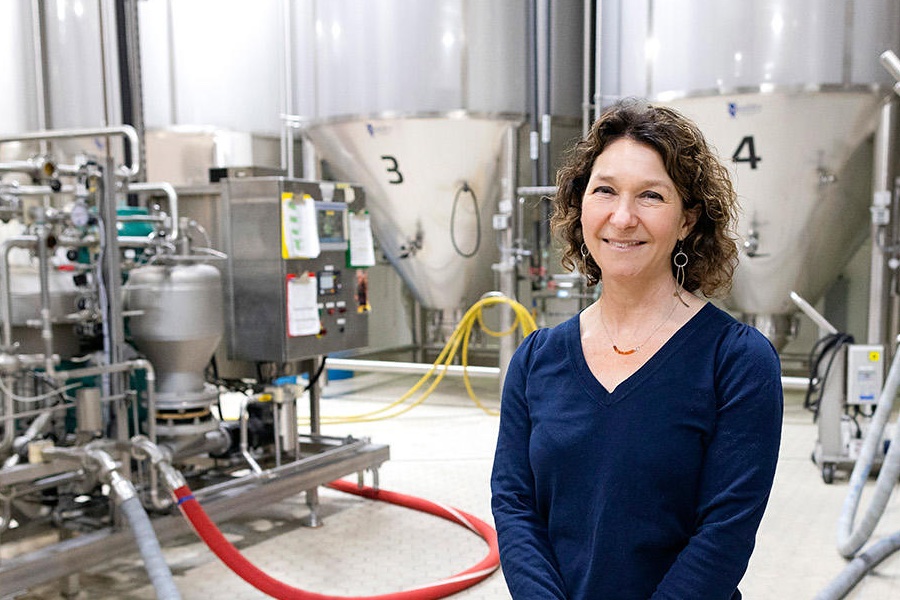
On one family vacation, a young Paige Novak had to stop at a wastewater treatment plant so her father, an environmental engineering professor at Virginia Tech, could get a tour.
“I’ve been to wastewater treatment plants since I was really little,” says Novak, now a professor and head of the U of M’s Department of Civil, Environmental and Geo- Engineering. “Even as a kid, I felt strongly that we needed to protect the environment.”
After she and colleagues had researched ways to capture pollutants from wastewater and use bacteria to turn them into energy, they hit upon the idea of applying such a technology to craft brewing. Besides benefitting the environment, it would save money and help businesses become more self-sustaining.
The savings could be substantial. According to the Brewers Association, which promotes independent craft breweries, brewing a pint of beer generates an average of seven pints of wastewater.
In 2013 Novak and her colleagues connected with Fulton Brewing Co. in Minneapolis. This spring the team deployed 30-liter reactors at the brewery to test a process they had developed.
“It isn’t huge, but it’s the next step,” Novak says.
How not to waste wastewater
Normally, larger craft breweries in Minneapolis pay the city to pump oxygen into their wastewater. Oxygen allows bacteria to convert carbon from organic matter in the wastewater to carbon dioxide, the major greenhouse gas. And the electricity needed to power the treatment adds more greenhouse gas emissions.
But Novak and her colleagues used a culture of mixed bacteria to turn pollutants in brewery wastewater into methane and hydrogen that could be used as clean fuel. So far, she says, the experiment at Fulton is going well.
“It would be great for any industry that makes and packages food or beverages,” Novak says.
- Categories:
- Science and Technology
- Bioengineering
- Science
- Water





